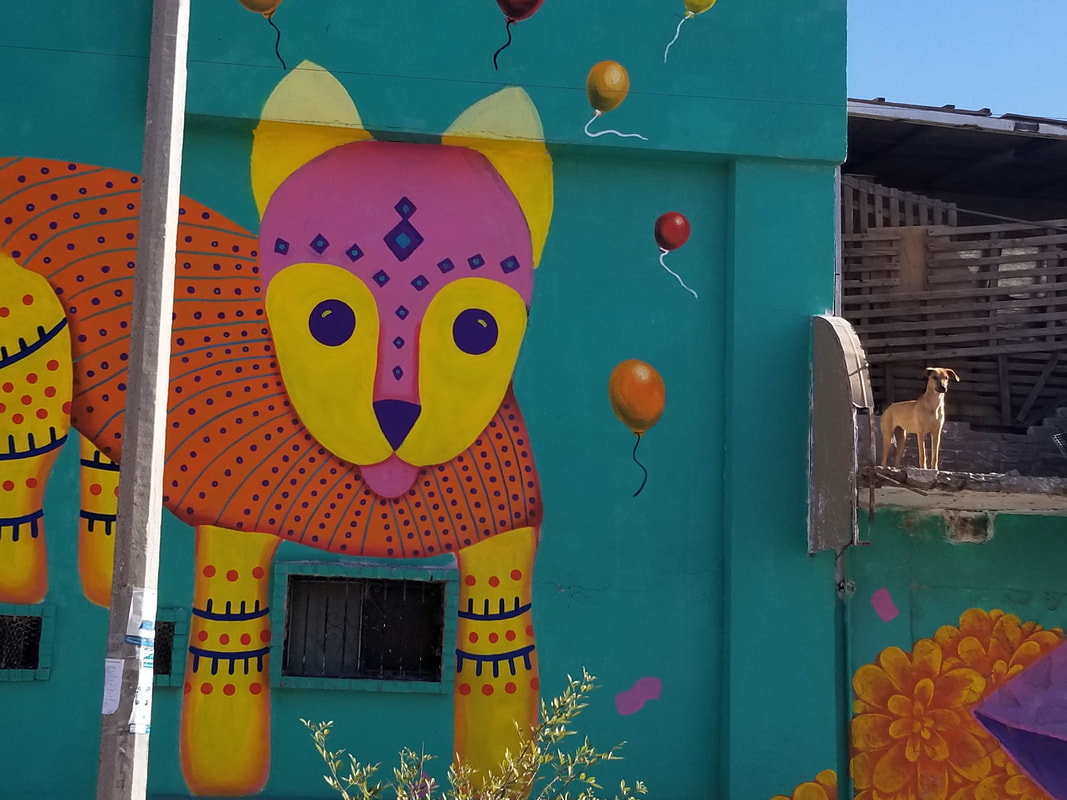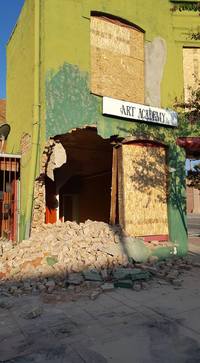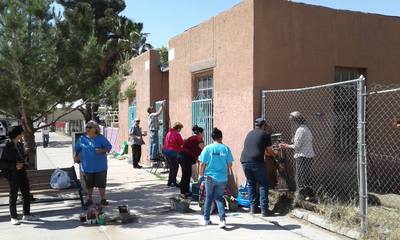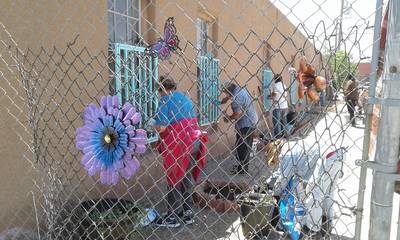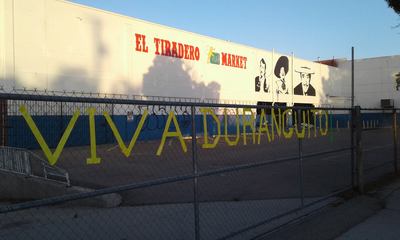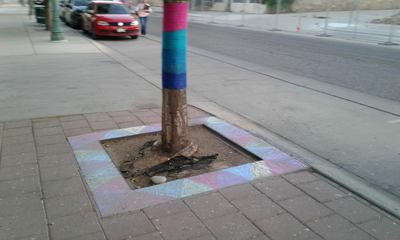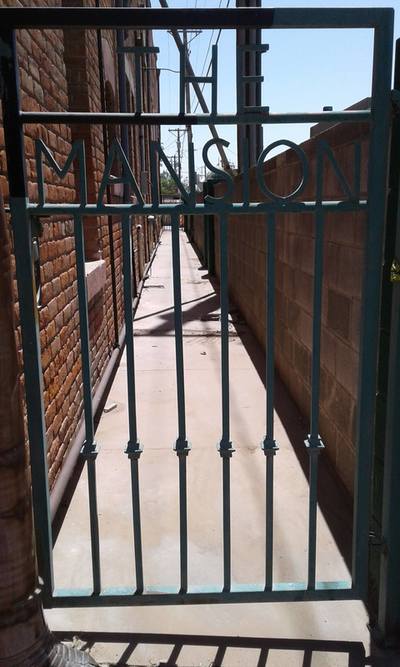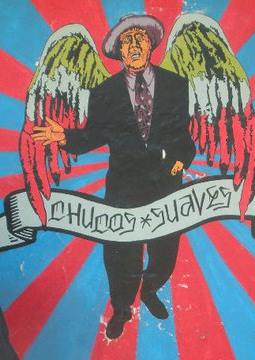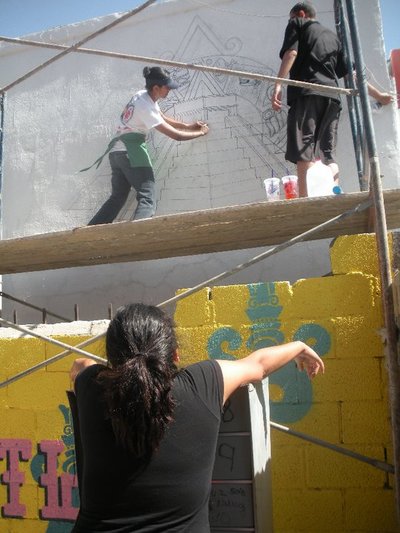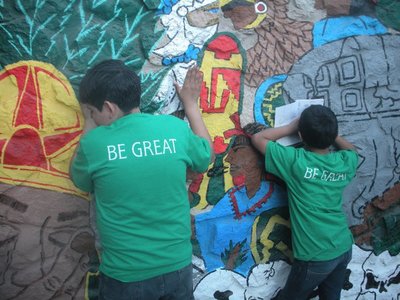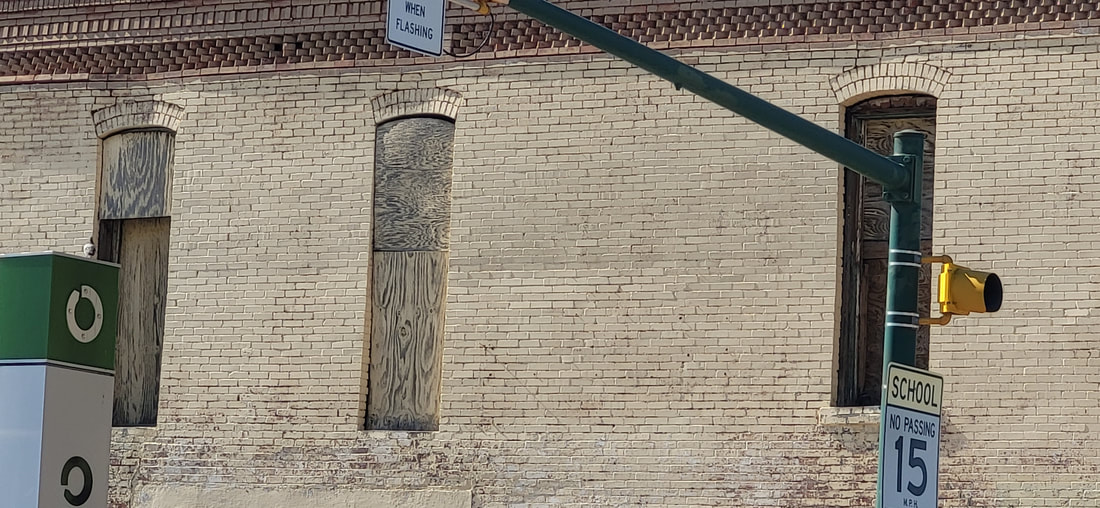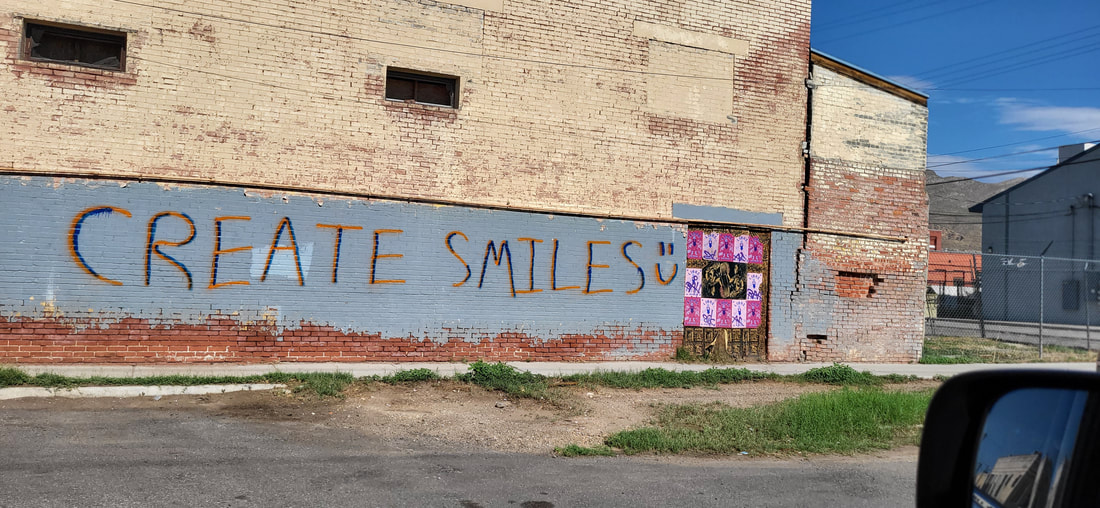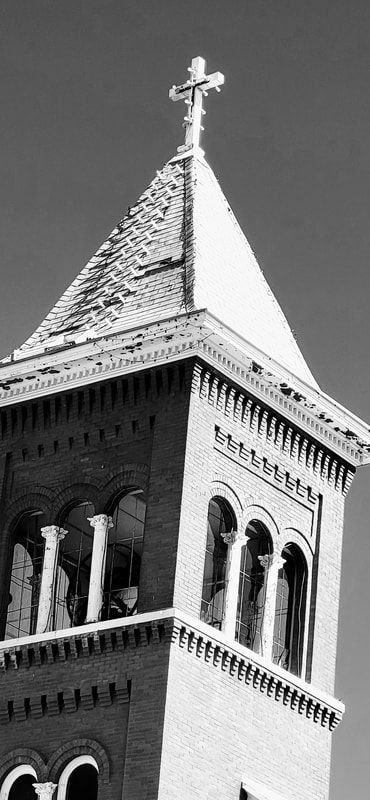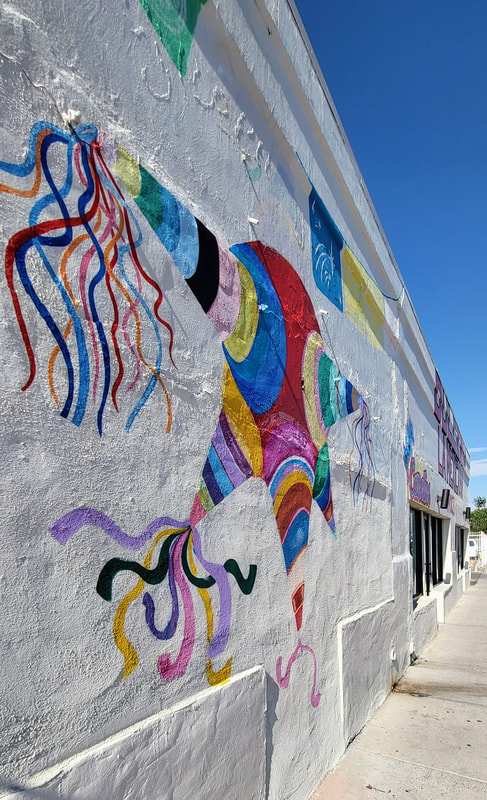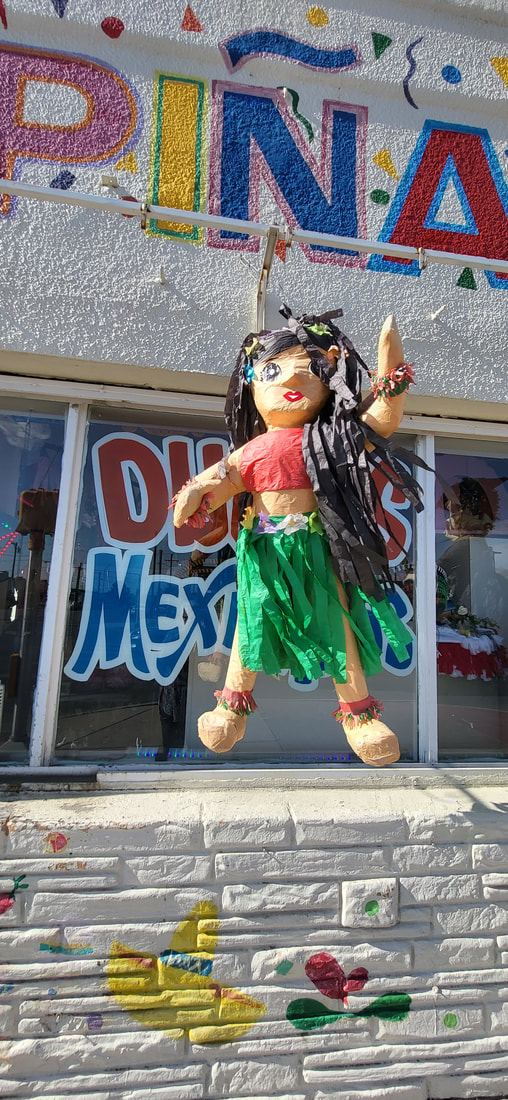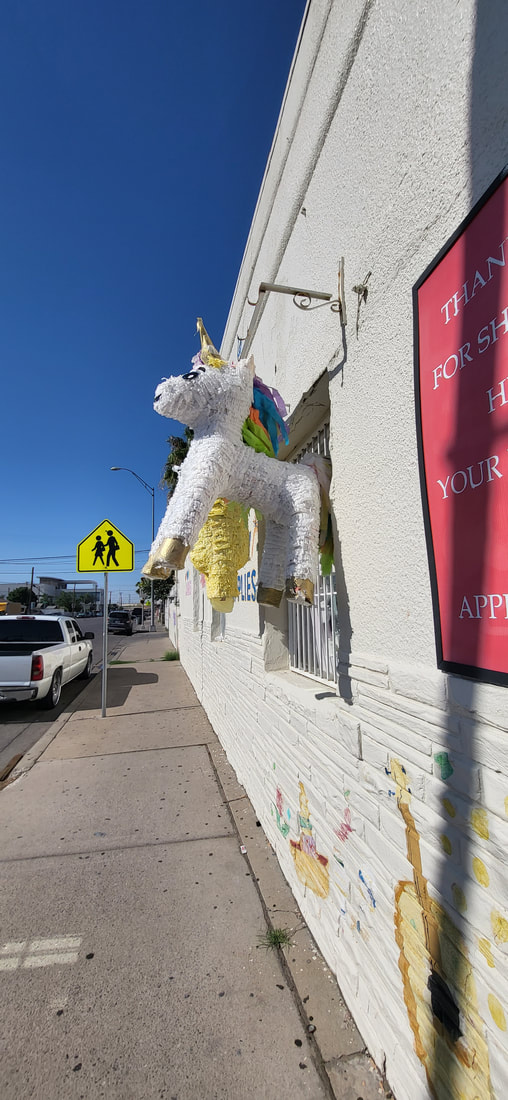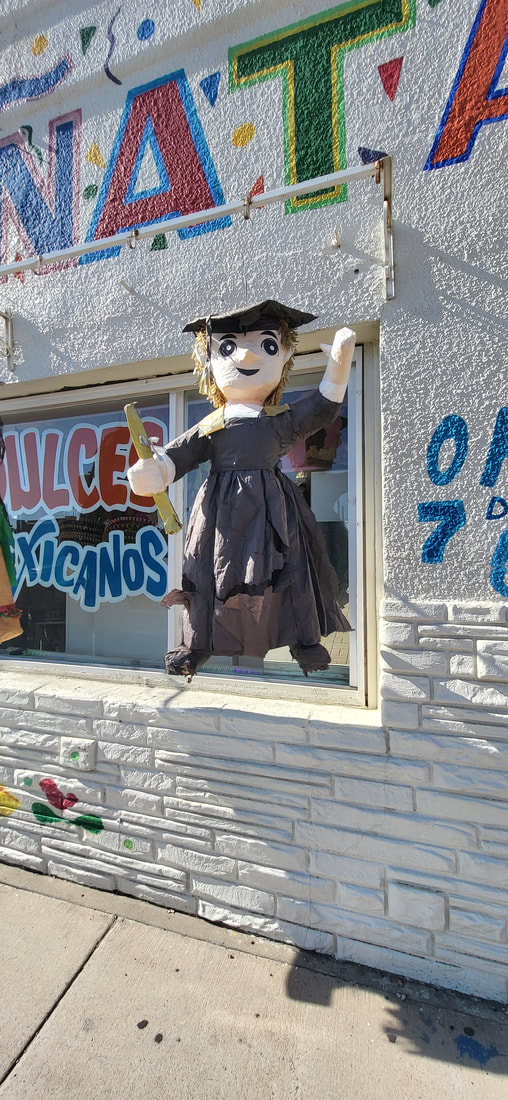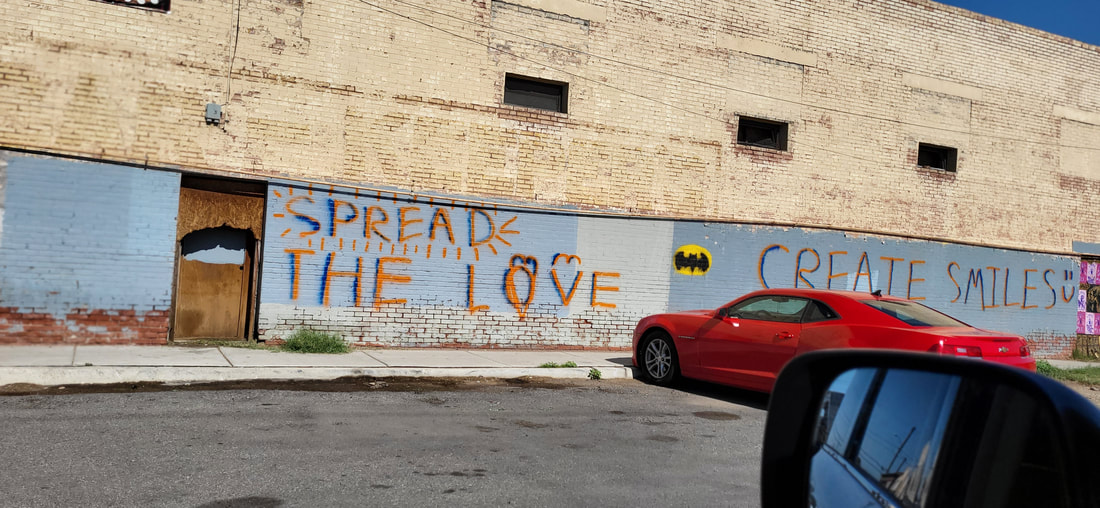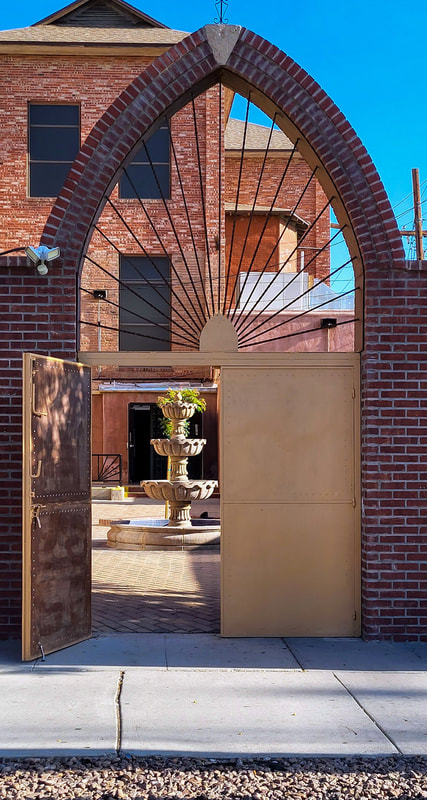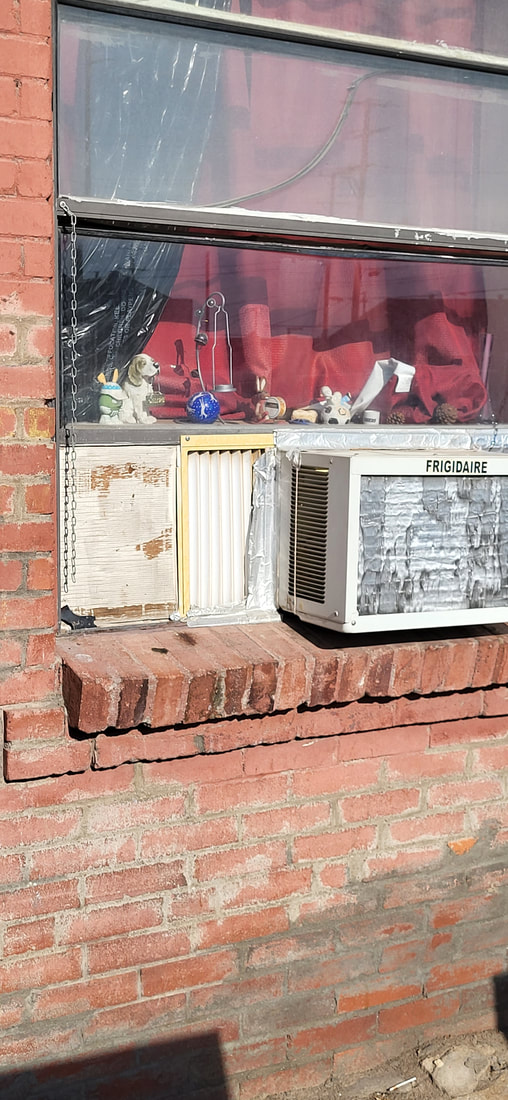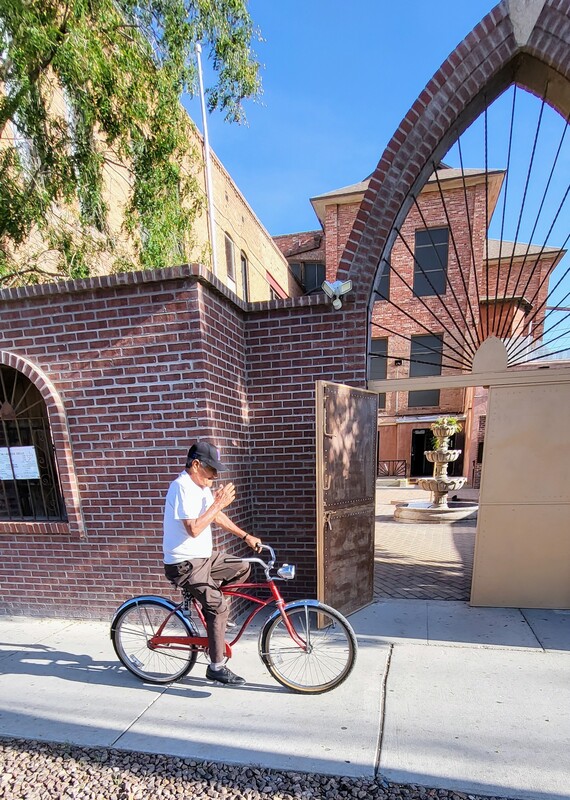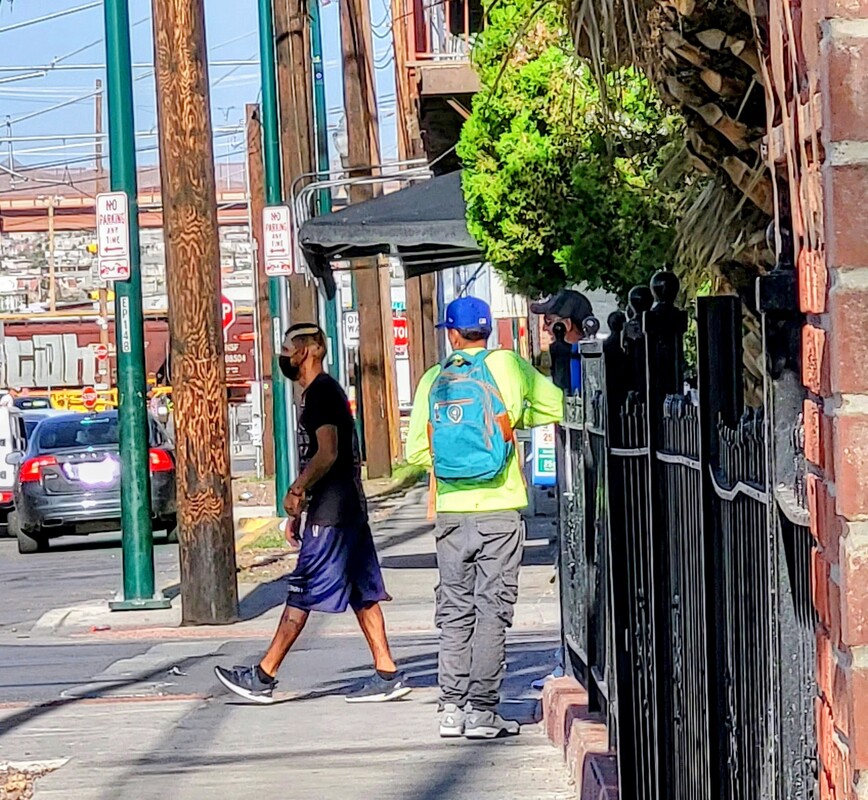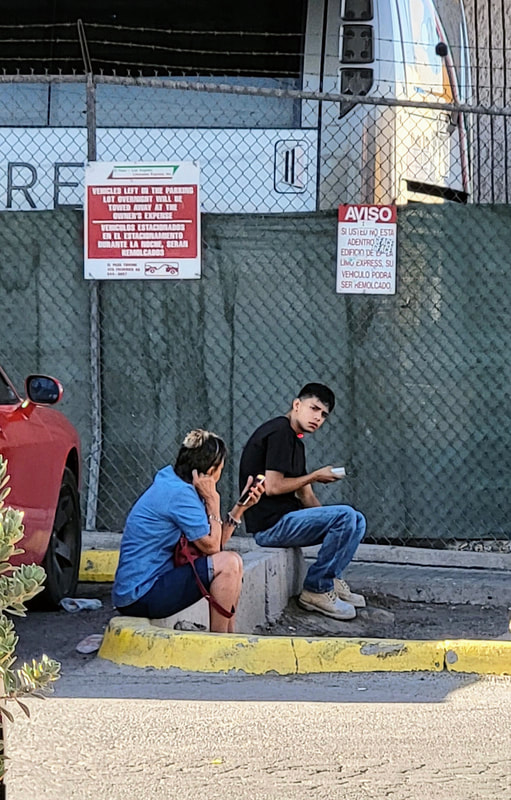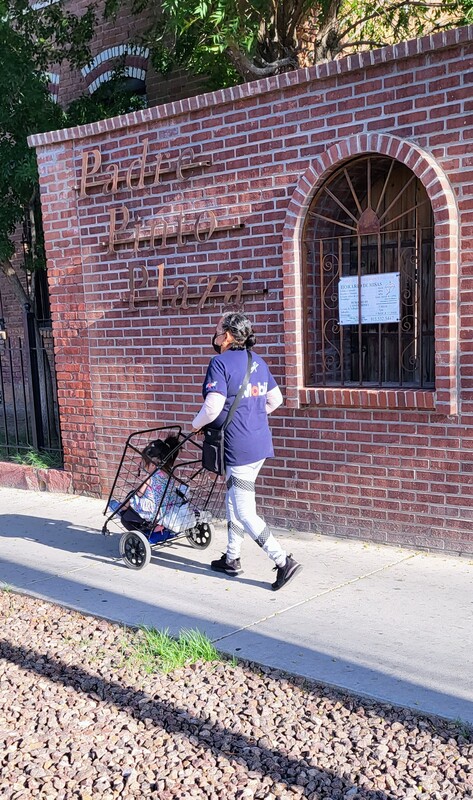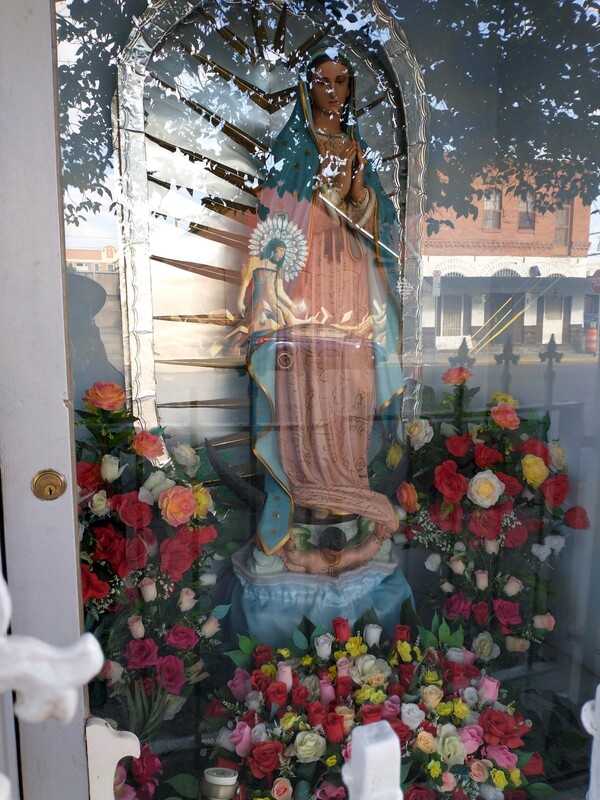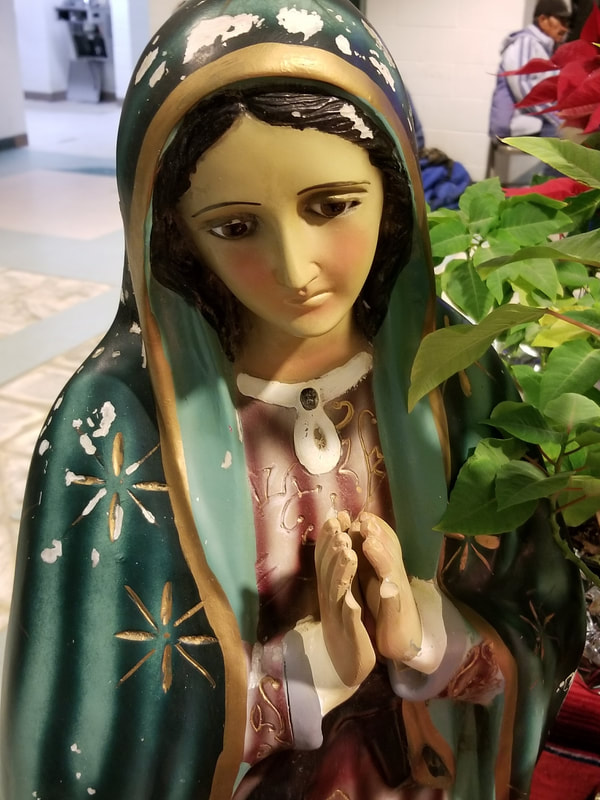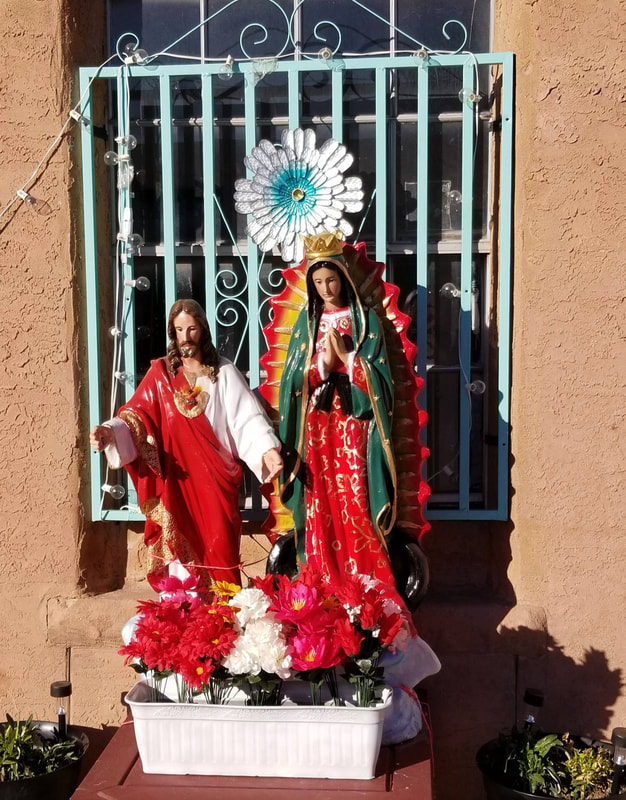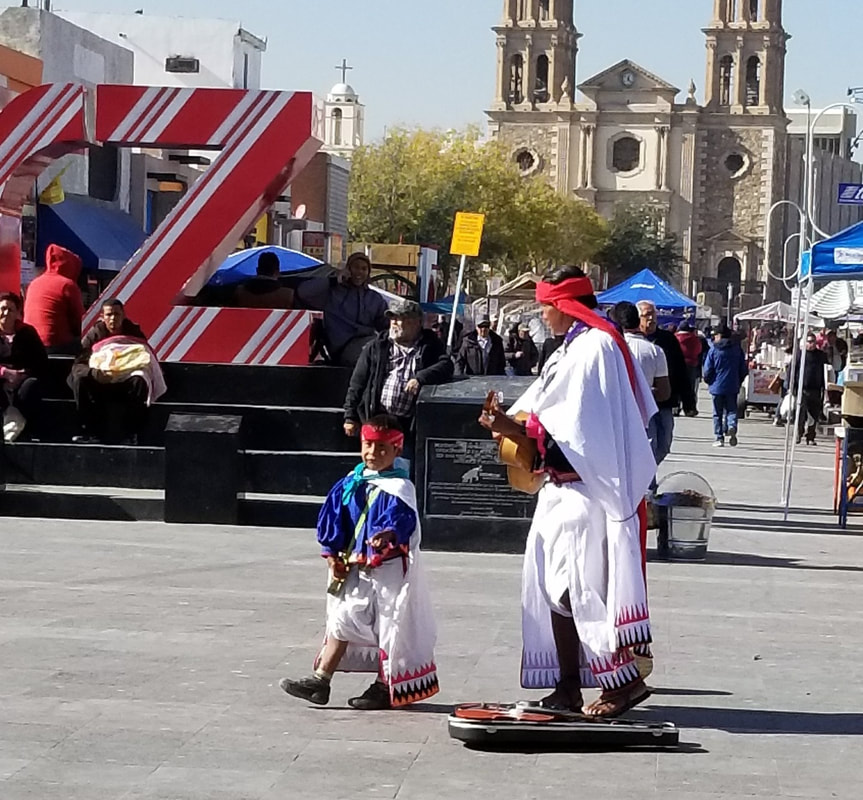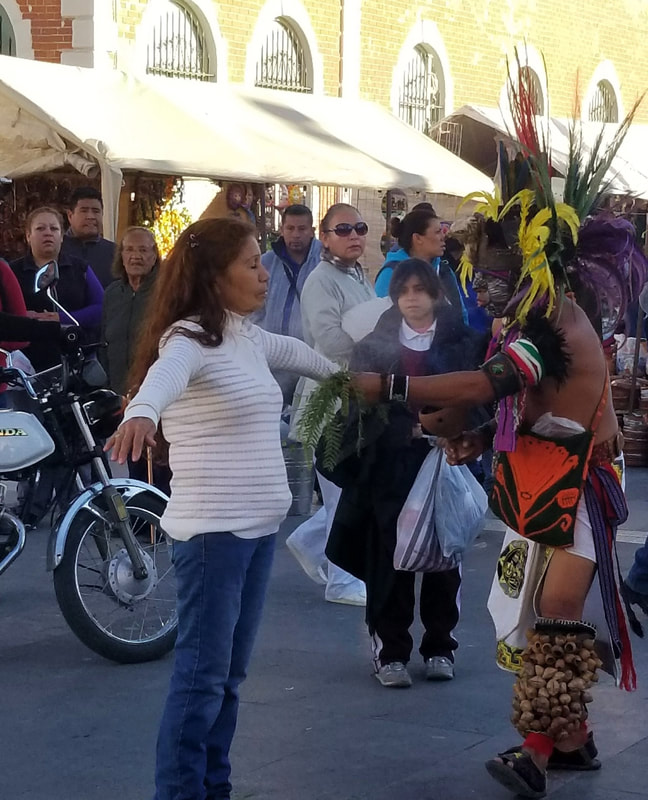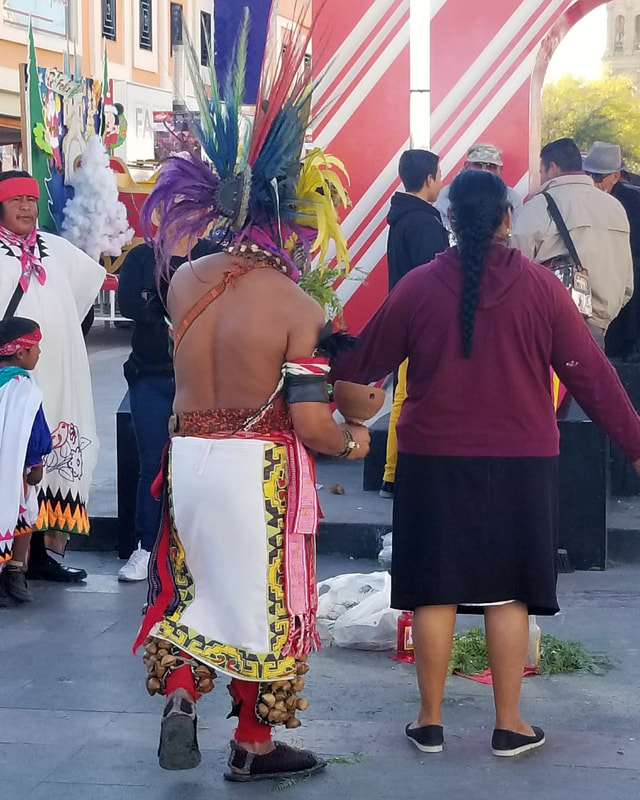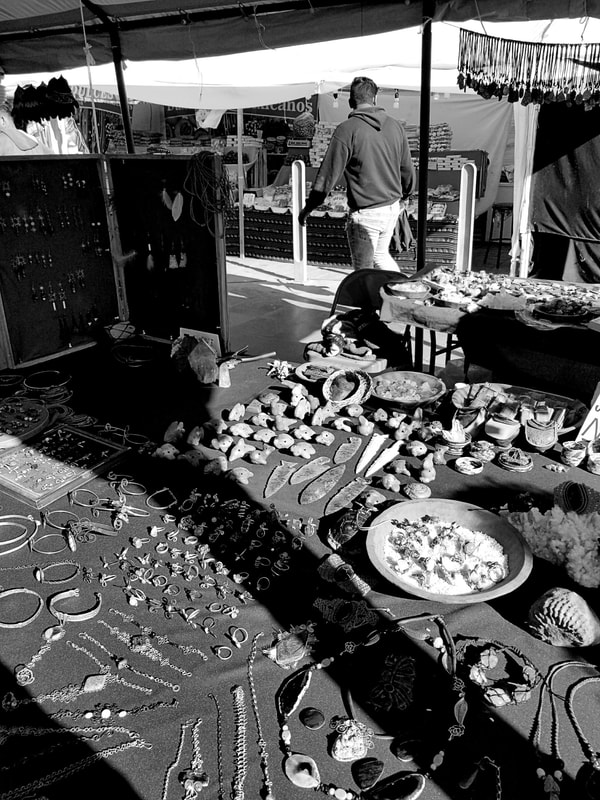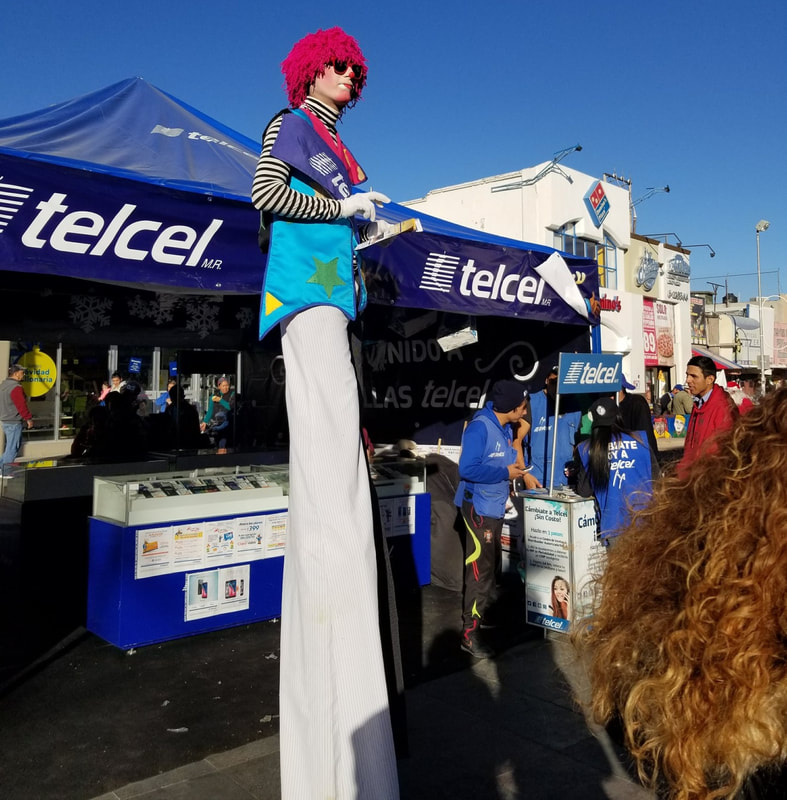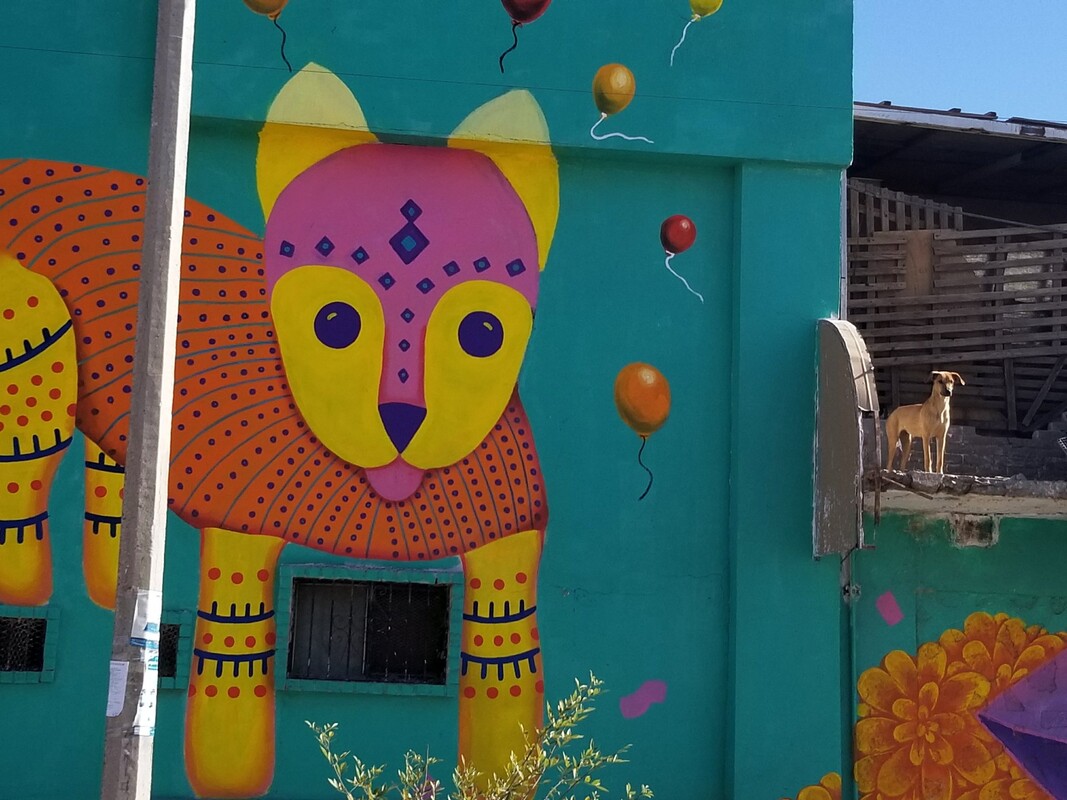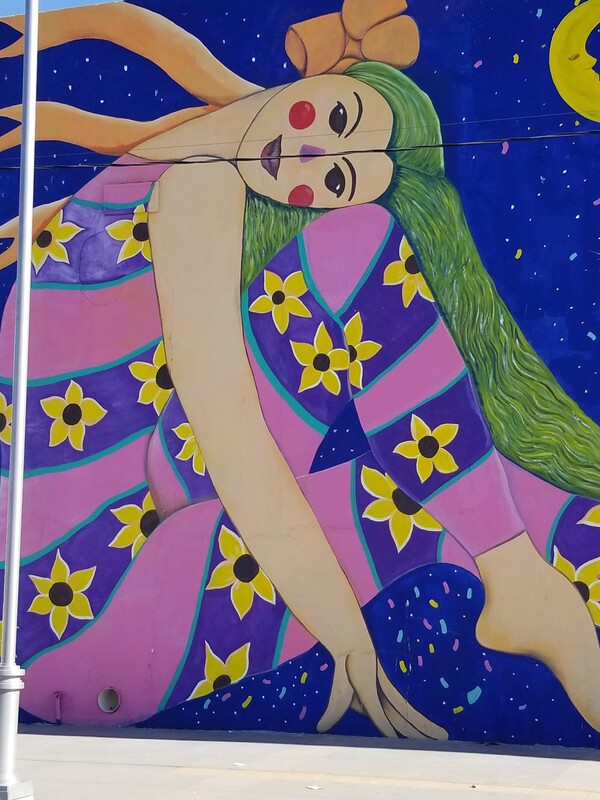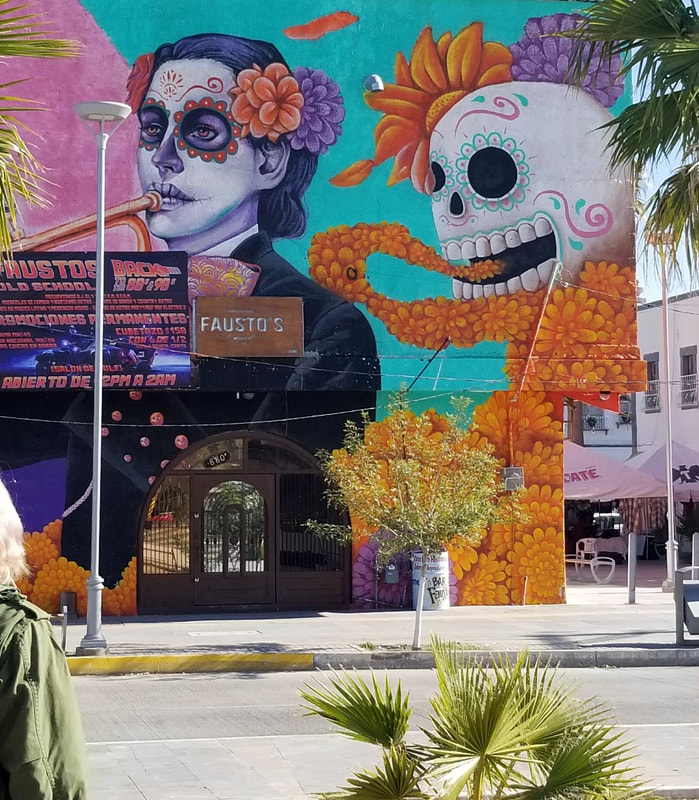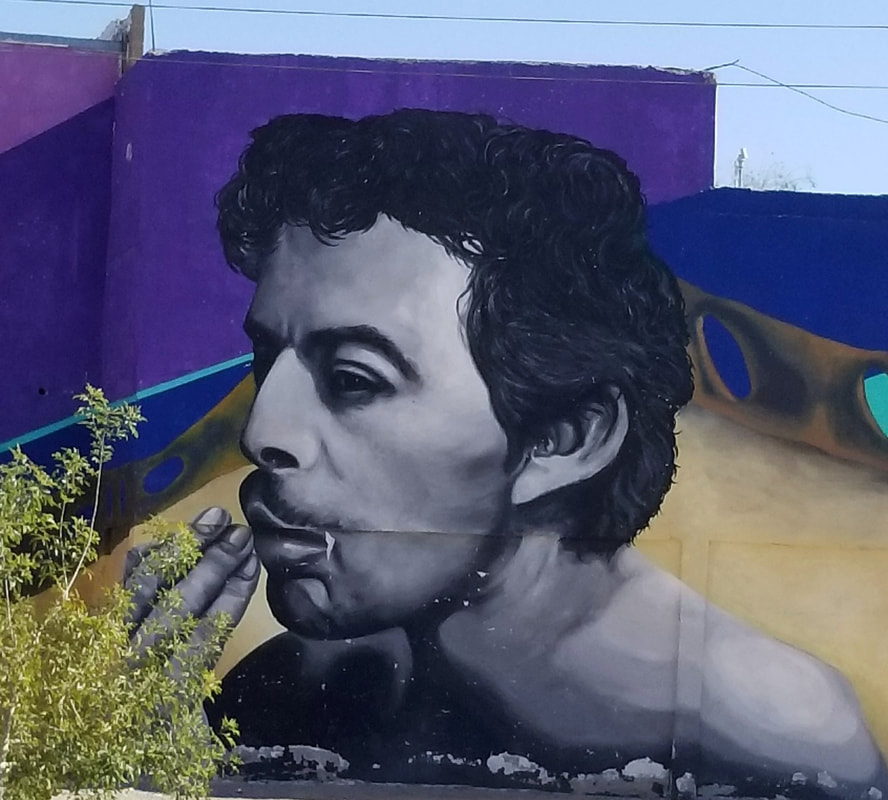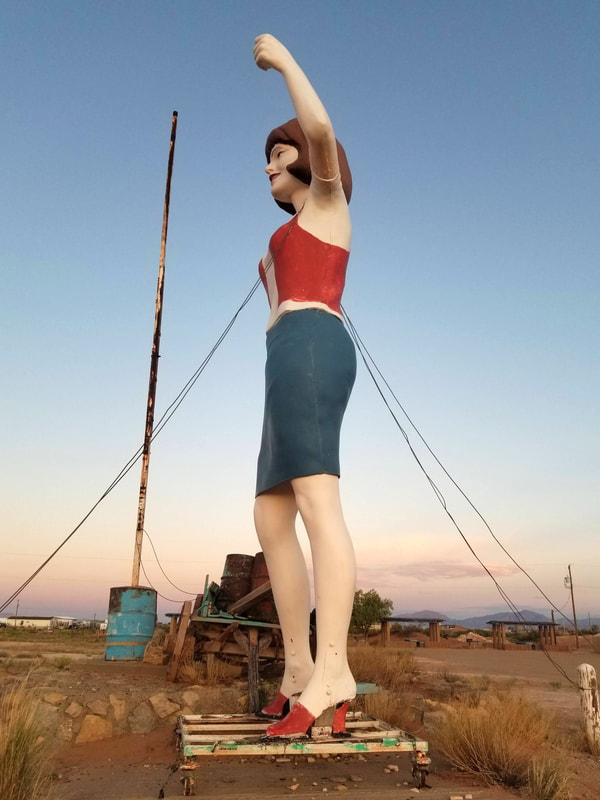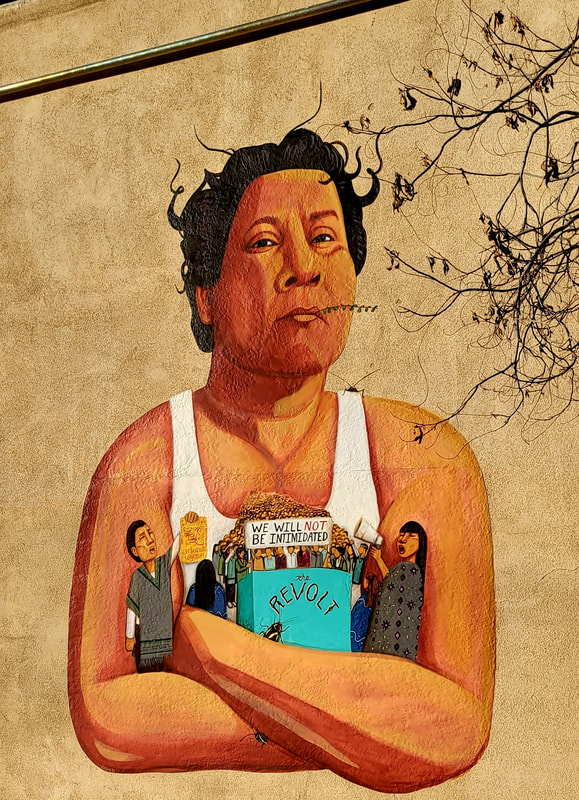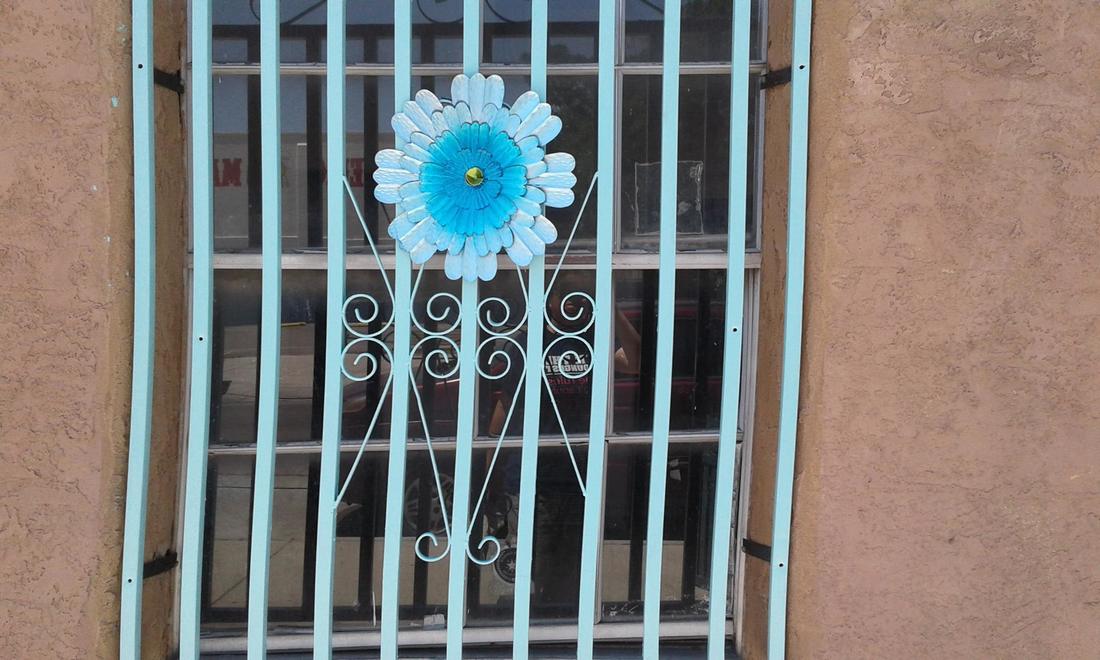 Photo courtesy of Ana Reza. Beauty is a bridge between the past and the future. Recently, I wrote a blog post about Barrio Duranguito, a south side El Paso neighborhood that has been under siege for a year and a half after the City Council voted to demolish it for an arena. We could say it's been under siege for decades, a victim of purposeful disinvestment by its property owners and neglect by the City. The interrupted story of the barrio has been utilized to create an image of the neighborhood as one that is ugly, worthless, and old and its people disposable. The true story of Duranguito has been interrupted by the actions of the City government, the property owners, and sometimes the media. Since voting to demolish Duranguito in October 2016, the City has allowed it to fall into further decay: a drive by demolition in September 2017 caused damage to many buildings. A vacant lot has been allowed to become a dumping place. Homes are boarded up. Gardens, fenced in by the City, are dying. It reminds me of a scene in the 1981 movie Zoot Suit. As the defendants were nearing their trial, they were not allowed to bathe or shave or change clothes. They appeared before the jury looking disheveled and unclean, just what the 1940s White jury imagined Mexican Americans to be: dirty Mexicans. The powerful create the negative image that society expects and then justifies injustice by pointing to the dirty Mexicans or the unsightly barrio as not worth saving. That is part of the interrupted story: we are kept from the true images of Mexican American youth who take meticulous care of their appearance or the beloved barrio where residents paint their apartments, plant geraniums and fruit trees, and sweep the sidewalks in the early mornings. A historic building on the corner of W. Overland and Chihuahua Street following the demolition attempt. Photo courtesy of Paso del Sur. In this scenario, what can we do? The residents and allies of Barrio Duranguito don't have the millions that its enemies have. We don't have access to the political power that its opponents have. But we do have something important: we have our bodies to put to work and we have hope. Those are powerful. In recent weeks, we have been bridging the interrupted story by creating beauty. The vacant lot is slowly being transformed into a garden. Windows are painted beautiful colors. A drab chain link fence is transformed by red plastic cups. Duck tape spells out the words "Viva Duranguito!" Trees are wrapped in colorful yarn and children paint the sidewalks with chalk. A walkway by the once beautiful rooming house, The Mansion, is cleaned of its clutter. We are people from different backgrounds, in ages from elementary school to 90, who are from El Paso and who traveled here from other cities. We are all called together by our vision of what Duranguito truly is: a place of beauty. Creating beauty is our form of resistance against forced uglification and destruction. Photos courtesy of Ana Reza. In her 2013 book Urban Alchemy: Restoring Joy in America's Sorted Out Cities, psychiatrist Dr. Mindy Fullilove outlines the steps to restoring joy in distressed neighborhoods and cities by describing nine elements. Element 3 is "make a mark." She writes, "As urbanists, we make signs to start a new dialogue between people and their spaces. Whether we are noting history or current events, beauty of horror, we are indicating that the space is important. Signs are the beginning of the change we need to make." By creating spots of beauty and art in a barrio under siege, we are making a mark, declaring joyfully "This place is important." In her chapter on "Element 3: Make a Mark," Fullilove writes that "art calls us." We have seen this happen before in barrios under attack. In 2010, we opened Museo Urbano at 500 S. Oregon, in El Segundo Barrio. Working with muralist David Flores, we commissioned a mural to commemorate pachuco culture, whose roots were in that very neighborhood. As he worked on "Chucos Suaves," residents and students found inspiration. Soon, they asked if they, too, could paint murals and with permission of the property owner, they began their work of beautification and resistance. Soon, the tenement courtyard was filled with smaller murals painted by barrio residents, mostly young men, that called people in. I remember once, while sweeping the courtyard on an early Sunday morning, a woman in her 80s who was walking home on her way back from church, asked if she could enter. A striking mural of the United Farmworkers Union eagle had caught her eye. She shared with me the story of a strike she had participated in in the 1950s and pulled out a tattered UFW union membership card that she still carried with her. Art calls us and beauty encourages hope and imagination. 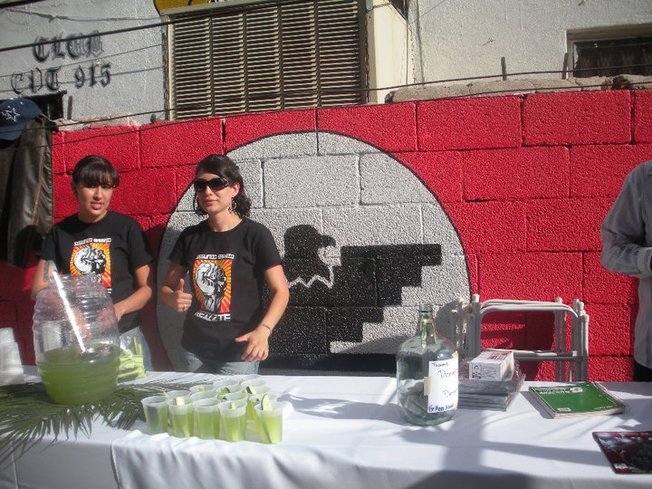 Monet Munoz and Sandra Enriquez on Museo Urbano opening day, standing in front of the UFW eagle mural painted by a resident. Left to right: Detail from "Chucos Suaves" by muralist David Flores; UTEP MEChA students painting their own mural; Visitors from the Boys and Girls Club taking notes on the community-painted murals they are viewing. The interrupted story has the power to hurt us, as individuals, families, neighborhoods, cities, and even nations. To bridge the story is equally powerful. Bit by bit, we are bridging the story of Duranguito by making a mark and affirming that this place and these people are important.
1 Comment
6/6/2018 08:46:03 pm
I visited the jail in the city last month and I saw some of them making this one. They are so admirable for making such a good art. I do hope that they would make it too, as a way of living. It is a good thing that they have shared the procedure on how to do it. It can be an art we can teach for young ones. It is a good decor in the house and even it can be gifted.
Reply
Leave a Reply. |
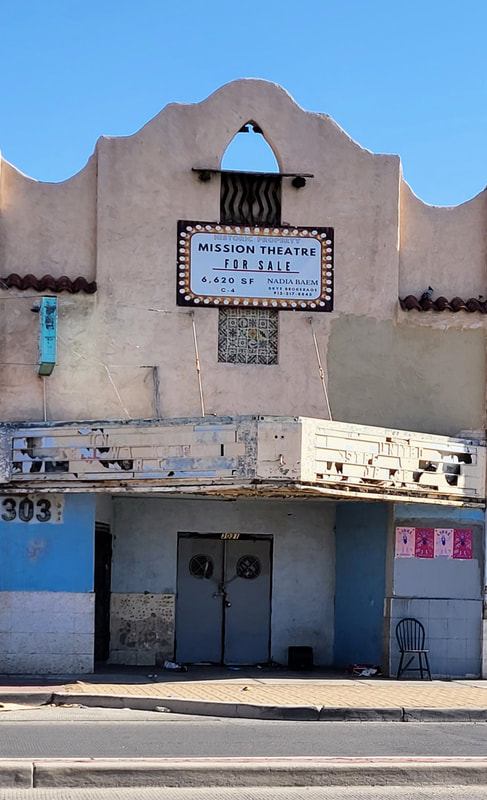
My father used to tell me about sneaking into this theater to watch movies as a kid in the 1910s. It showed Spanish language films. In the 1940s, it was transformed into a "whites only" theater but that didn't last long. By the 1950s, it was headquarters to the Mine, Mill, and Smelter Workers Union, a radical labor organization. Before it closed, it housed the Mine and Mill Bar.
Segundo Barrio
Father Rahm Street
July 2022
La Virgensita en la frontera
Cd Juarez downtown
December 2017
La Mariscal, Ciudad Juarez, 2017
Montana Vista 2019
El Centro July 2022
